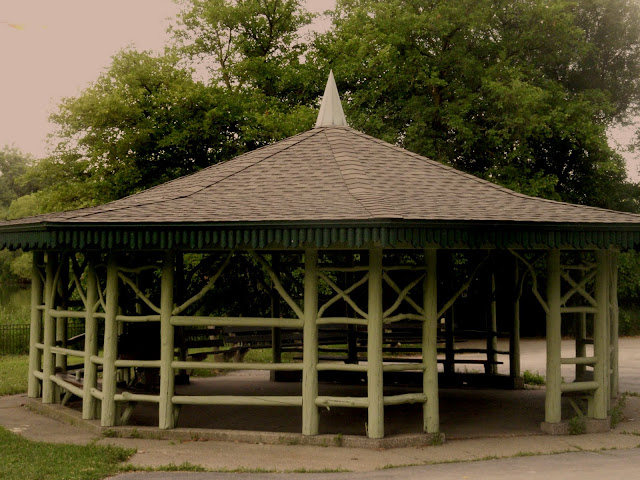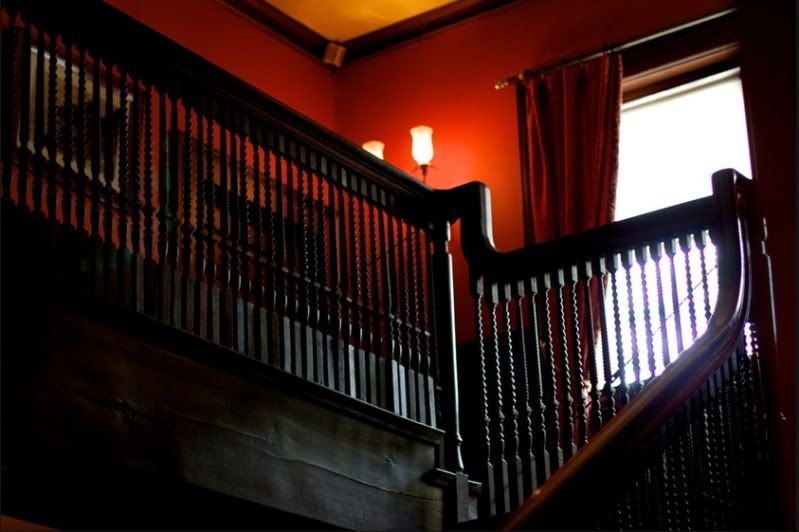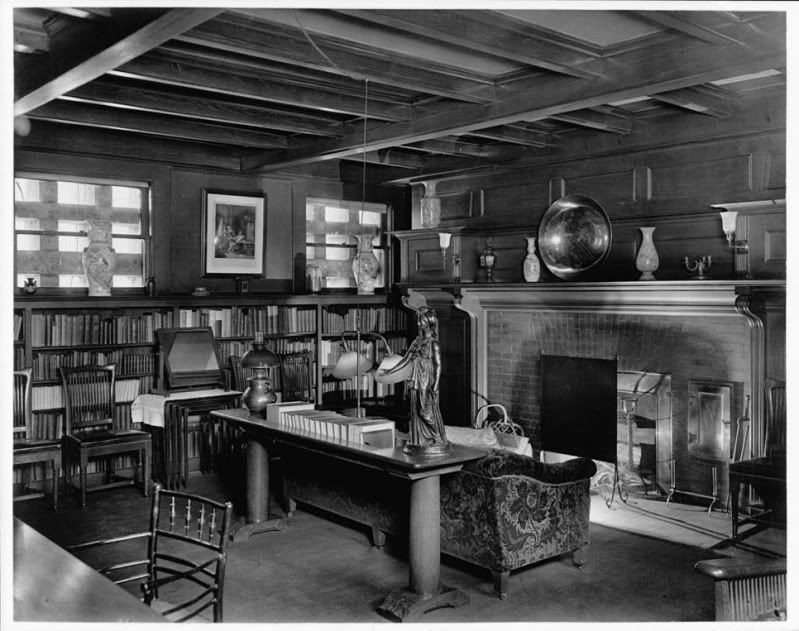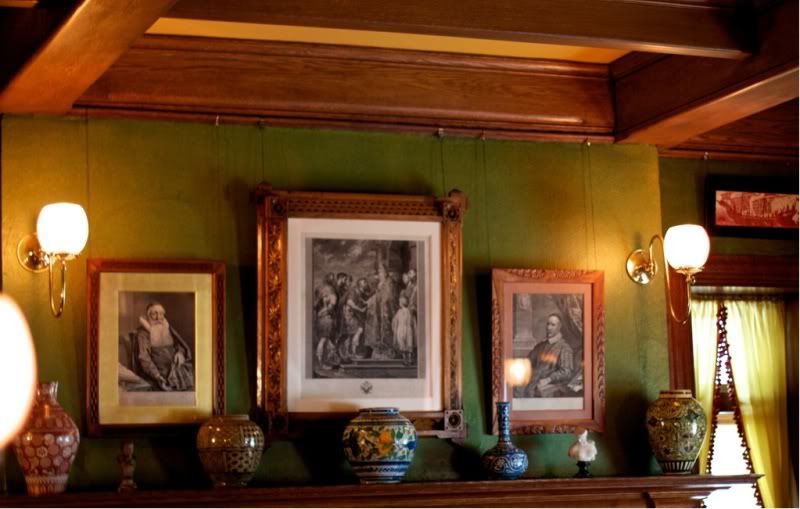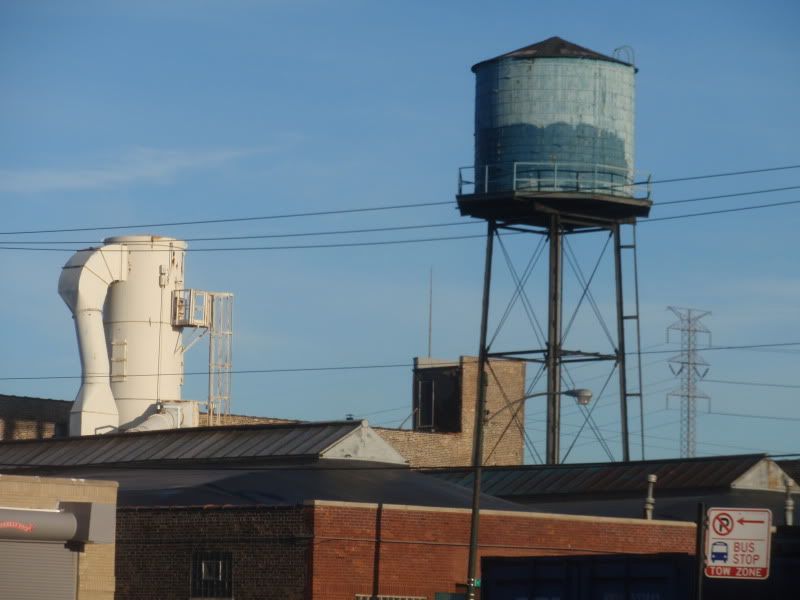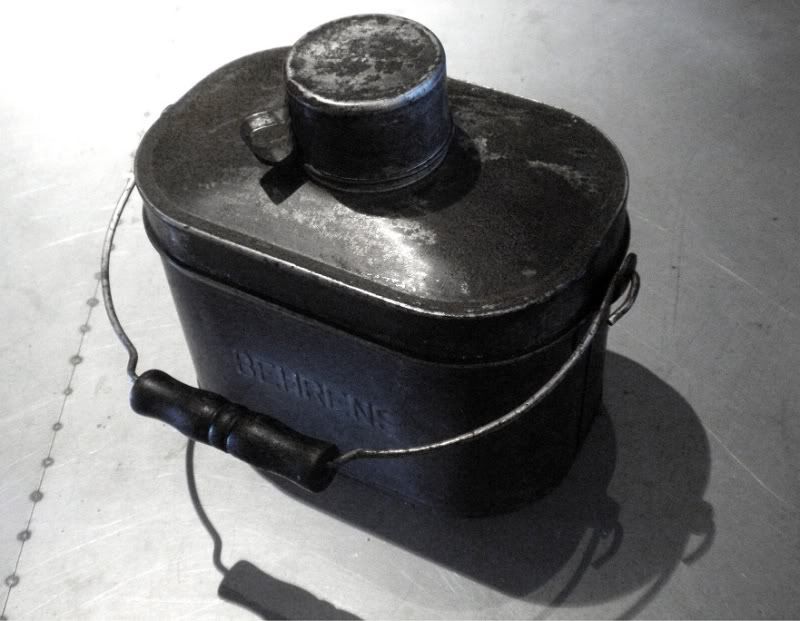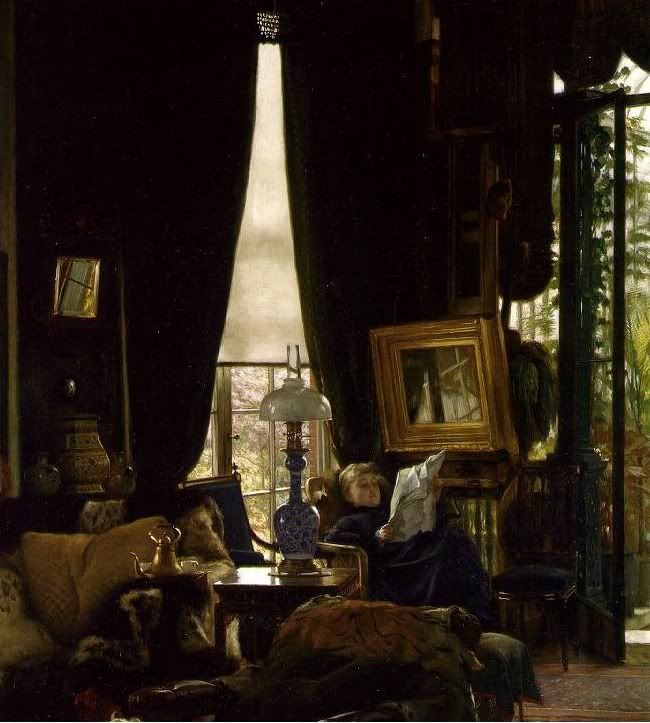Urbs in Horto--City in a Garden--has been Chicago's official motto since the early days, so it's appropriate that the Dearborn Garden Walk, which just had its 53rd anniversary on Sunday, is one of the oldest in the country. And thanks to its annual midsummer date, it's also one of the hottest.
I have a clear memory of being forced against my will through an endless series of scorching brick terraces at a tender age, which put me off gardens--particularly
Chicago gardens--for years. Way too hot. Somewhere, there's a Kodachrome slide of me at age eight or nine, wearing a snappy red-&-white seersucker sport coat, a clip-on bowtie and a hateful scowl that could have buckled steel, except that, obviously, the July sun was capable of that all by itself. Why in the world my parents dragged my little brother & me to the Dearborn Garden Walk on the hottest day of the year is beyond me, unless it was because they couldn't get a babysitter. Actually, that's probably it, because we didn't live in Chicago. We were up here from Danville for the weekend, visting one of my dad's Marine Corps pilot buddies & his wife.
Anyway, we all got dressed up--people did that back then, even in hundred-degree heat--and we spent the afternoon wandering through the hellish gardens of people we didn't know. I hated the gardens, all of them, and it seemed like we saw dozens, although there were probably only three or four. They say that the whole idea of a garden walk was still a novelty back then. That may well be. I only remember the heat. Well, that and my seersucker jacket. At least
it was cool, even if I wasn't.
Fast forward forty nine years, and in a lot of ways, Sunday's garden walk was much like my first. The punishing heat was the same, and if the color of my seersucker jacket was different--red then, lime green Sunday--the wrinkles were the same. And did I mention the heat? Holy kamoly. And yes, sure, in a jacket & tie, I was hot, but I wasn't any hotter than the women in sleeveless tops & men in polo shirts--and
they were getting a nasty sunburn, besides. Face it, on a day like Sunday, you're going to be miserable no matter what, but I figured that dresssing a little better than was strictly necessary, and going with more rather than less clothing might also ward off sunstroke. And it seemed to work. But here's the real question: Why can't the North Dearborn People do this in, say,
November? Oh, well. It's for a good cause, and hot or not, I realized that this would likely be my only chance to see some of these places, so I went. And I'm glad I did.
I will say this: the people who put this all together every year deseserve a ton of credit: the planners, the gardens' owners, who allow perfect strangers to wander through their property, the cheerful volunteers who stood long hours in the sun waiting to make a little 'X's in our program books, the designers who created little vignettes in some of the gardens--something about travel and Elizabeth Taylor, but my brain was too hot to pay much attention to that part--and the real heroes of the day, the musicians who gamely played through their misery in beautiful but fiendishly hot surroundings. Then there were the personable tour guides--I remember Eric & Edie--who talked about the architecture of some of the houses on Dearborn to those of us whose post-Garden Walk energy levels hadn't yet flatlined.
What, two days later, impresses me the most out of the more than a dozen gardens I saw? Well, it wasn't the private garden the size of the infield at Wrigley, elegant though it was, nor the ET-themed vignettes, and it wasn't the perfectly manicured hedges & container-based floralscapes of a gated community that I didn't even realize was there. No, my hands-down favorites were the two least flowery and staged-looking gardens of the bunch.

The first standout was a pair of conjoined gardens created in the late twenties by Edgar Miller out of gerrymandered spaces between existing buildings, using random architectural debris from demolished Victorian houses he picked out of the trash--stuff that no one else wanted at the time. But in Edgar Miller's talented hands, broken tiles & busted carvings became art. And Miller embellished his quirky assemblages of found materials with his own distinctive terracotta sculptures, which he located at strategic points--in place of a keystone of a rubble-brick arch, inset below the windows in a vageuly Moderne bay, atop a crooked stone wall--and the results are enchanting, a word I don't ever remember using in my life. Here, though, it's perfectly appropriate.
And the visuals aren't the only appealing thing here. There's also water,
moving water, a really good thing to have on a day like Sunday. And when I say "moving" water, I don't mean those gurgly, trickly fountains--what I think of as nail-bar fountains--but gutsy fountains, fountains with fish the size of my fist, fountains whose full-throated splashing managed to drown out the noise of the busy neighborhood. And Miller's gardens' appeal doesn't depend on conventionally pretty flowers. In fact, around here, flowers are irrelevant.
Anyway, if you missed yesterday's walk (and if, like me, you're not fortunate enough to know anybody who lives in this amazing complex--known originally as the Carl Street Studios, and known now by its address, 155 West Burton Place) it's too late to see these
 Photo courtey of ChicagoGeek via Flickr
Photo courtey of ChicagoGeek via Flickr
beauties, but you can still get a great sense of Edgar Miller's genius in
Edgar Miller and the Handmade Home: Chicago's Forgotten Renaissance Man, a great book written by my friend Richard Cahan & Michael Williams, with spectacular photos by Alexander Vertikoff. Let me be as clear as I can about this book: it's about the biggest, handsomest, best-produced art book I've ever seen in my life, and having it be about a guy who just happens to be a Chicagoan is just a plus.
Buy it now.
The other garden that I really liked was the last one on the tour, the one at the Cardinal's Mansion, a dark-red mid-Victorian pile at 1555 North State Parkway. All the other houses & gardens on the tour were proteced by high walls & locked gates, and a few seemed to have actual security guards. There's a fence around the Cardinal's house, too, but it's the kind of fence that's easily cleared by a ten-year old with a running jump--basically, by me, fifty years ago. And their fences aren't the only difference between this place & some of the other gardens. Fences are merely symbols. The other properties are all about
exclusion. This one welcomes--or, at least,
seems to welcome--everyone. And on Sunday, it did, as long as you had paid your 30 dollars and had your book to prove it.
But there's another difference, one of tone. Here, on one of the the largest & most historic properties in the most expensive neighborhood in Chicago, the garden is nothing more elaborate than a simple circle in the lawn, with an unpretentious mix of vegetables & ordinary-looking flowers: some healthy-looking tomato plants climbing on wooden stakes--and judging by the height of those stakes the cardinal has some really high hopes for his crop this year--plus some dill, a few roses. Basically, it's the same kind of down-home garden your great-grandmother might have had in her backyard when you were young, and the only thing missing to complete the illusion was the spin & rattle of an old-school push mower. Talk about escape.

In fact, that wonderful feeling of ordinary-ness seemed to catch one woman off-guard because I spotted her absent-mindedly fingering a fuzzy shoot of something or other that had grown through the plastic-mesh fence that surround the actual plants--I'm not a plant person, so I'm not even sure what kind of plant it was--and I could almost see what was running through her mind:
Is stealing a cutting from the Cardinal's garden a venial sin or a mortal one? Maybe if Eve had thought a little bit harder about whether or not to go for that apple, we wouldn't all of us be in the mess we're in now. Maybe if she hadn't helped herself without permission, the weather forecast for the next ten days wouldn't be Hotter than Hell. It's hard to say.
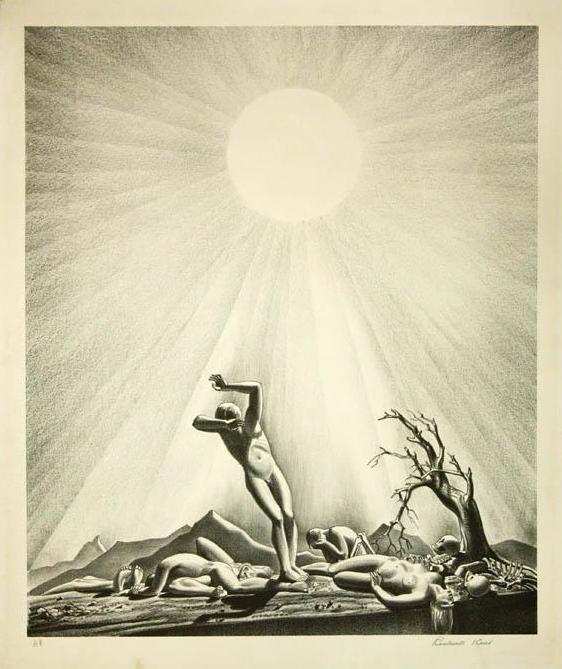 |
| End of the World Series: Solar Flare. Lithograph by Rockwell Kent |
At any rate, the woman must have decided the risk wasn't worth it because she slowly moved on. Of course, not everyone appreciated the lack of Wow Factor. On my way out I stopped to I chat with the volunteer at the gate, and while I was talking to her, a couple came out of the gate and the woman made an exasperated, dismissive gesture back in the direction of the Cardinal's tomato plants. "Did we
miss something? Is that
it?" And I wanted to say, Yes, that's it and Yes, you definitely missed something--but I didn't. I figure some people get it, while others will never get it, but in the long run, it doesn't matter, anyway. All I know is that Hot or Not, I'll definitely be back for next year's walk.
----------------------------------------------------
Anyway, as I strolled through Edgar Miller's tiny courtyard gardens, the rough Chicago brick walls & the plants climbing over the architectural fragments & the bird songs & the splashing fountains reminded me of something--
our shop! At SG Grand, we have all of those things--everything, that is, but Miller's genius. But everything else can be copied, and sometimes, a copy is good enough.
 |
| The shop at SG Grand, 1822 West Grand Avenue |
So if you find yourself on West Grand Avenue past Ashland, and you need a break from the heat & glare, stop into
SG Grand Urban Antiques, where it's cool & dim we have lots of cool things to look at.
We're at number 1822 and we're open every day but Monday. You can call us at 312-226-6654 if you want to make an appointment to come in, but you don't really need an appointment. Till then, stay cool.
Only fourteen weeks till November!
..................................................................................................
TO EDGAR!

 And for those who prefer, as I do, to spend a quiet evening at home, Pleasant dreams.
And for those who prefer, as I do, to spend a quiet evening at home, Pleasant dreams.




















